Keep workingon those shoulders as we continue with Brian Schiff's Functionally Fitminiseries with the push-up plus, floor variations. The purpose of thisexercise is to increase overall shoulder strength and target the serratusanterior.
See 'RelatedResources' below for past Functionally Fits (including the shoulder series) andother exercises and training tips.
Execution
Serratus Push-up Plus
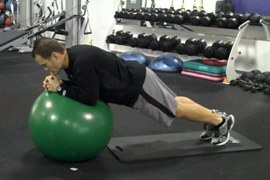
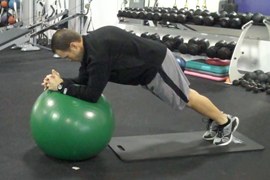
Beginwith the forearms on the stability ball in a plank or three-point position withthe feet about shoulder-width apart. Keeping the abdominals fully engaged, pushdown through the forearms, and protract the shoulder blades. Round or protractthe shoulders at the top of the push-up. Pause at the top, and slowly lowerdown. Perform two to three sets of 10-15 repetitions.
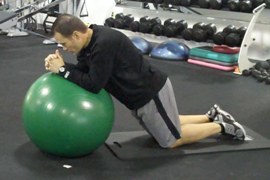

Modifyby moving to the kneeling position on the floor for beginners.
Push-up Plus
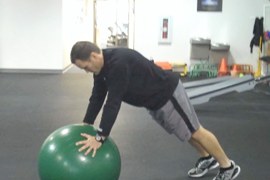
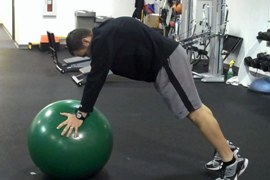
Beginwith the hands on the ball (more toward the outer portion of the ball for addedstability) and elbows fully extended while in the three-point position, feet atleast shoulder-width apart. Slowly lower down to where the elbows bend to 90degrees or to the point where quality form begins to diminish, and then returnto the upright position. Round or protract the shoulders at the top of thepush-up. Perform two to three sets of 10 repetitions.
Modify by moving to the kneeling position with the ball against the wall or by standing and placing the ball on the wall, feet about 18-24" away from the wall. I would strongly advise placing the stability ball against the wall in kneeling to avoid it slipping out forward and possibly creating a hyper-abduction/flexion/external rotation injury to the shoulder.
Application
These exercises are atypical with respect to traditional shoulder exercises. They are designed to strengthen the entire shoulder complex as well as target the serratus anterior muscle. They do require a certain prerequisite level of shoulder stability, upper-body strength and kinesthetic awareness.
In addition, these exercises demand stability from the core and lower-body musculature, making them more dynamic overall. I incorporate them with higher-level athletes (particularly gymnasts, swimmers, pitchers and volleyball players) and general clientele based on ability and shoulder needs.
Additional Notes
My progressive approach to this exercise is:
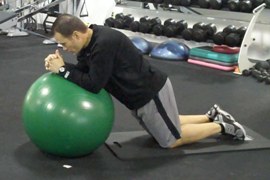
1. Kneeling serratus push-up plus
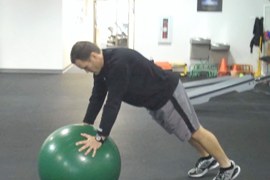
2. Serratus push-up plus on toes
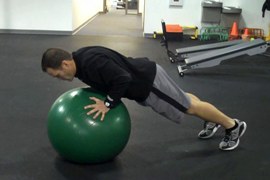
3. Wide base (hands and feet) stability ball push-up plus
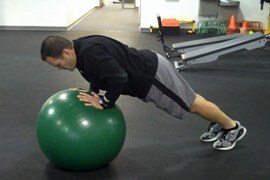
4. Narrow base (hands and feet) stability ball push-up plus
Note: I did not include wall or kneeling push-ups as I had the higher-level athlete or advanced client in mind, although they can be included prior to moving along to exercises 3 and 4.
Be sure to spot the client appropriately in the event s/he loses control of the ball and starts to slip or fall off the ball. I suggest spotting from one side, near the head and shoulders, where you can quickly stabilize the ball or correct the upper torso to prevent a major undesired perturbation.
Brian Schiff, PT, CSCS (www.brianschiff.com) is a licensed physical therapist, respected author and fitness professional. He became a Certified Strength and Conditioning Specialist (CSCS) in 1998. In 2000, he opened his own personal training and sport-specific conditioning facility, Fitness Edge, in Dublin, Ohio. Brian has presented at several professional conferences and seminars on injury prevention and sport-specific training.

















